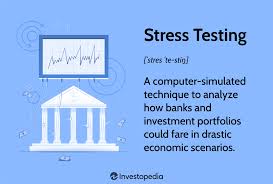
🏦 Bank Stress Tests: How Regulatory Signals Influence Trader Behavior
September 2025 | Financial Sector Brief
Bank stress tests are no longer just regulatory exercises—they are market-moving events. Traders pay close attention to results, as they signal capital adequacy, risk exposure, and potential dividend adjustments. Positive outcomes can trigger rallies in bank stocks, while failures can spark sector-wide selloffs.
Recent stress tests in major U.S. and European banks have highlighted exposure to rising interest rates and loan defaults. Traders anticipating potential weaknesses have positioned themselves in ETFs, options, and credit spreads to benefit from market reactions.
Moreover, stress test commentary often contains subtle guidance on future regulatory tightening or macroprudential risks. Traders skilled at interpreting these cues can forecast not only stock moves but also broader sector rotations.
Risk management is crucial: while these events offer opportunities, the market can overreact to minor details, producing temporary volatility that may reverse sharply. Combining fundamental analysis with technical execution ensures precision.
Takeaway: Bank stress tests are key market signals—traders who interpret them effectively can capture sector-wide moves while managing exposure.

